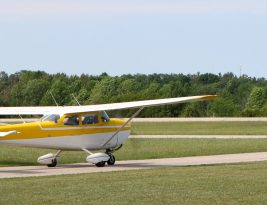Monday on the blog we briefly discussed runway incursions and recommended practices for pilots to avoid such an occurrence. As air traffic grows and airports become busier, both general aviation and commercial, runway incursions become more of a growing concern to pilots and airport operators. In an effort to cut
…Blog Posts
Learn to reduce your risk of a runway incursion by following these simple FAA recommendations outlined in the Instrument Procedures Handbook (FAA-8083-16).
On any given day, the NAS may handle almost 200,000 takeoffs and landings. Due to the complex nature of the airport environment and the intricacies
…Today’s post is excerpted from the second edition of our textbook Aerodynamics for Aviators. This book features extensive illustrations and covers everything from the fundamentals of flight to high-speed flight, and includes an excellent compendium of formulae and equations used at all levels of aviation.
Aircraft
…Share your flying story with the Learn to Fly Blog
We’re looking for student pilot stories dealing with overcoming challenges, lessons-learned, or insights-gained, humorous or serious. If selected, your story will be published on the Learn to Fly Blog! This is an ongoing call for submissions and there’s no deadline. Once selected
…A good landing is most likely following a good approach, so aim to be well established in a stabilized approach with the airplane nicely trimmed by the time you reach short final, the last part of the approach. Short final for a training airplane may be thought of as the
…In Monday’s post we were introduced to the student pilot’s first solo flight. Today, we will take a look a little more in depth to understand exactly what the instructor needs to do to prepare his or her student for solo flight. As a student, this
…You are able to fly solo when the instructor believes, with some confidence, that you can fly safely with a degree of consistency and you have mastered the presolo maneuvers defined in the regulations. Most important is evidence that you are taking control and responsibility for your own actions—that you
…This week on the Learn to Fly Blog the theme has been aerodynamics, and rather than stick to Private Pilot level aeronautical information we’ve hit you with some “graduate level” knowledge. Today, I thought it would be interesting to take a look at the primary flight controls of a typical commercial
…

